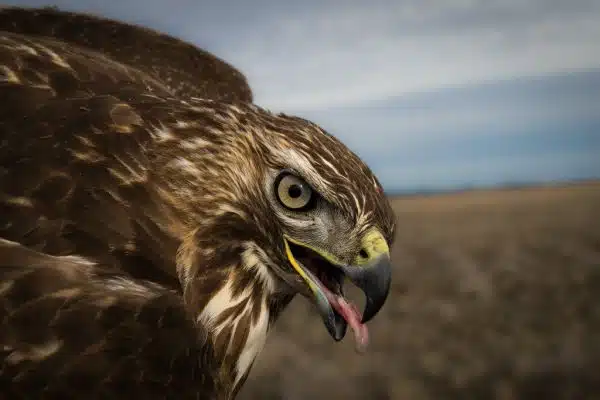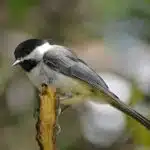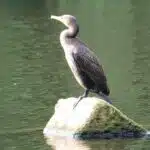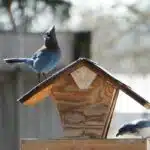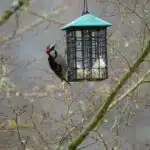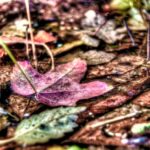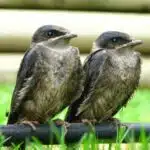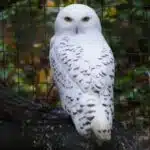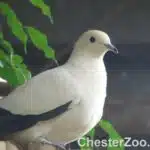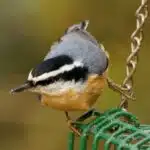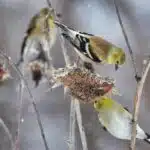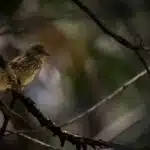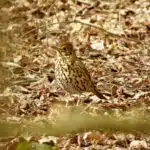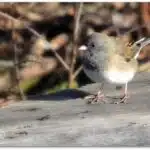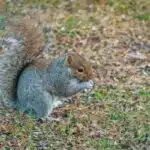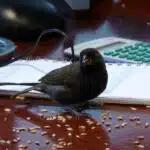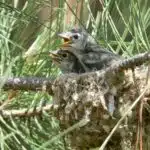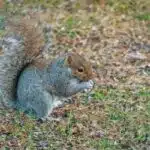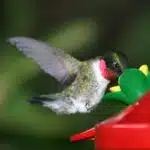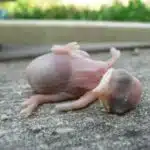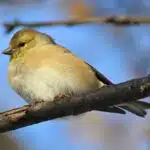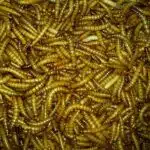Birds of prey, such as hawks, are among the most majestic and awe-inspiring creatures in the world. With their sharp talons and keen eyesight, these predators strike fear into the hearts of their prey while captivating onlookers with their sheer power and beauty. For many wildlife enthusiasts and backyard birdwatchers alike, attracting hawks to their yards is a dream come true. But how can one go about luring these elusive hunters to their own backyard without causing harm or disrupting the natural balance of the ecosystem?
As a wildlife conservation specialist, I have spent countless hours studying birds of prey and devising strategies for attracting them to specific areas without causing harm or disruption. While there is no one-size-fits-all solution for attracting backyard hawks, there are several key factors that can make your yard more attractive to these magnificent creatures. In this article, we will explore some of these factors and provide practical tips for creating an inviting environment for hawks in your own backyard.
Understanding The Behavior Of Hawks
Hawks are fascinating birds of prey that have captured the attention of humans for centuries. Understanding their behavior is the first step towards attracting them to your backyard. Hawks are primarily known for their hunting habits, which involve using their sharp talons and beaks to capture prey on the ground or in the air. They are also renowned for their keen vision, which allows them to spot potential prey from a great distance.
Another important aspect of hawk behavior is their migration patterns. Many hawks migrate over long distances, often following specific routes each year. This can make it difficult to predict when and where they will show up in your area. However, by researching migration maps and patterns, you can get a better idea of when hawks are likely to be passing through your region.
Overall, understanding the hunting habits and migration patterns of hawks is crucial if you want to attract these magnificent birds to your backyard. By taking the time to learn about these behaviors, you can create an environment that is more welcoming and conducive to their needs as predators. In the next section, we will explore how researching the types of hawks in your area can help you attract them even more effectively.
Researching The Types Of Hawks In Your Area
Understanding the Behavior of hawks is crucial for attracting them to your backyard. Hawks are birds of prey that hunt small animals such as rodents, snakes, and insects. They are territorial and require a large area to roam around, hunt and breed. Therefore, it’s important to know which type of hawk resides in your area so you can provide an ideal habitat for them.
Identifying habitats is the first step towards attracting hawks to your backyard. Different types of hawks prefer different habitats such as forests, deserts, grasslands, and wetlands. For example, red-tailed hawks prefer open areas with scattered trees or forest edges while Cooper’s hawks prefer wooded areas with thick underbrush. It’s important to research which habitat suits your local hawk species best and create a similar environment in your backyard.
Recording sightings is another way to attract hawks to your backyard. By observing the behavior of hawks in your area, you can learn about their feeding habits and preferred perching spots. This information will help you provide adequate habitat for them by placing bird feeders or water sources near their perching spots. Additionally, by recording sightings and sharing them with local conservation organizations, you can contribute to ongoing research on hawk populations in your area.
To attract hawks to your backyard, providing adequate habitat is essential. This includes creating an environment that provides shelter from harsh weather conditions such as rain or snowstorms. Trees or shrubs that provide secluded locations for nesting will also attract breeding pairs of hawks looking for a safe place to raise their young ones. Lastly, keeping a clean yard free of debris will ensure that there’s enough space for hawks to fly around without any obstructions. By following these guidelines and providing an ideal habitat for them, you’ll be able to attract beautiful hawks into your backyard effortlessly!
Providing Adequate Habitat For Hawks
Habitat features play a crucial role in attracting backyard hawks. These raptors require an environment that mimics their natural habitat, which includes open fields, woodlands, and water sources. The surrounding vegetation should provide ample perching opportunities, as well as nesting materials such as twigs and branches. Furthermore, the area must offer quality hunting grounds for the hawks to thrive.
Prey availability is another critical factor in attracting backyard hawks. Their diet mainly consists of small mammals such as rodents, rabbits, and squirrels. Therefore, if you want to attract hawks to your backyard, you must ensure that these prey species are present in sufficient numbers. A well-maintained landscape with plenty of vegetation cover can attract rodents and other small animals that serve as prey for hawks.
In summary, providing adequate habitat features and ensuring prey availability are essential elements in attracting backyard hawks. By creating an environment that closely resembles their natural habitat and offering sufficient hunting opportunities, you can successfully invite these majestic birds into your backyard. In the following section, we will discuss how installing bird feeders and baths can further enhance your chances of attracting these magnificent creatures.
Installing Bird Feeders And Baths
Having provided adequate habitat for hawks, the next step is to install bird feeders and baths. These installations can be done through DIY projects or by hiring professionals. Bird feeders and baths provide a steady source of food and water for the hawks, which is especially important during dry seasons when natural sources are scarce.
When it comes to choosing bird feeders and baths for hawks, it is important to consider their size and placement. Hawk-sized feeders should be used, as smaller ones may not hold enough food to sustain them. Additionally, these should be placed in areas where they can easily access them but still have some level of protection from predators. Baths should also be placed in an area that provides some level of privacy for the birds.
Maintenance tips are crucial in ensuring that the bird feeders and baths remain functional over time. Regular cleaning of these installations is necessary to prevent the growth of harmful bacteria that could harm the birds. By incorporating these maintenance practices into their routine, homeowners can ensure that they provide a safe environment for backyard hawks.
Offering nesting opportunities is another way to attract backyard hawks. These birds require locations to build their nests, so providing them with nesting boxes or platforms can help bring them closer to your home. With careful planning and implementation of these strategies, homeowners can successfully attract backyard hawks while providing a safe environment for these magnificent creatures.
Offering Nesting Opportunities
Providing nesting opportunities is a great way to attract backyard hawks. Nest boxes can be an effective way to provide safe and secure nesting sites for these birds of prey. When designing a nest box, it is important to consider the size and location of the box, as well as the type of nesting material that will be used.
The design of the nest box should mimic natural cavities found in trees or cliffs. The opening should face away from prevailing winds and should be large enough for the hawk to easily enter and exit. Nest boxes can be made out of a variety of materials, including wood or PVC pipe. It is important to choose a durable material that will withstand weather conditions.
Nesting material such as twigs, grasses, and leaves can be placed inside the nest box to create a comfortable environment for the hawk. It is essential to ensure that any materials used are free from pesticides or other harmful substances. Providing nesting material will give hawks a sense of security and encourage them to build their nests in your backyard. By offering these nesting opportunities, you will not only attract backyard hawks but also contribute to their conservation efforts.
Moving forward, creating a safe environment for hawks involves more than just offering nesting opportunities. The next step is to eliminate potential hazards in your backyard that could harm these birds of prey. By doing so, you can create an ideal habitat for hawks and support their presence in your community.
Creating A Safe Environment For Hawks
Offering nesting opportunities can be a great way to attract backyard hawks. However, creating habitats and providing food are also important factors in attracting these birds of prey. For example, by planting native shrubs and trees that provide perching spots and cover for hunting, you can increase the likelihood of hawks visiting your backyard.
In addition to creating habitats, providing food is essential for attracting backyard hawks. These birds primarily feed on small mammals such as mice and voles, so having an abundant supply of these prey species in your backyard will make it more attractive to hawks. You can also supplement their diet with bird feeders that offer seeds, nuts, and other foods that attract smaller birds that hawks may prey upon.
Overall, creating a safe environment for hawks involves not only offering nesting opportunities but also creating habitats and providing food. By doing so, you can increase the chances of these majestic birds visiting your backyard. In the next section, we will discuss how to minimize human disturbance in order to ensure the safety and well-being of these remarkable creatures.
Minimizing Human Disturbance
To attract backyard hawks, it is important to minimize human disturbance in the area. Reducing noise and eliminating artificial light can help reduce stress on these birds of prey. Loud noises such as construction or even loud conversations can disrupt their natural behavior and potentially drive them away from the area. Artificial light, such as street lights or floodlights, can also affect their hunting patterns by attracting prey towards areas that may not be safe for the hawk to hunt.
Limiting human presence and avoiding sudden movements are also crucial in minimizing disturbance to backyard hawks. Hawks are easily disturbed by human activity and may become wary of humans if they feel threatened or uncomfortable in their presence. When approaching an area where a hawk is present, it is important to move slowly and avoid sudden movements that may startle them. Additionally, limiting the amount of time spent in the area can help reduce stress on the hawk and allow them to feel more comfortable in their surroundings.
To further minimize human disturbance, planting native vegetation in the area can provide a natural habitat for backyard hawks. Native vegetation provides food sources for these birds of prey and allows them to hunt without having to travel far from their home base. Additionally, native vegetation provides natural cover and protection from predators, allowing these birds to feel safer while roosting or nesting.
Transition: Now that we have discussed ways to minimize human disturbance for backyard hawks, let’s move on to explore how planting native vegetation can further enhance their habitat.
Planting Native Vegetation
Minimizing human disturbance in your backyard is crucial to creating a welcoming habitat for birds of prey. With the rapid loss of natural habitats, our backyards can serve as sanctuaries for these magnificent creatures. By minimizing our presence and activity in the area, we can encourage hawks to visit and even settle down in our backyards.
Planting native vegetation is another effective way to create a backyard habitat that will attract hawks. Native plants provide food and shelter for local wildlife, including the prey that hawks hunt. When we plant native vegetation, we are not only providing a food source but also restoring the natural balance of our ecosystem. Moreover, native plants require less water and maintenance than non-native species, making them an eco-friendly choice for any backyard garden.
The benefits of planting native vegetation extend beyond attracting birds of prey to your backyard. These plants also help improve air quality, reduce soil erosion, and support pollinators like bees and butterflies. Therefore, creating a backyard habitat with native vegetation is not only beneficial for wildlife but also contributes positively to the environment as a whole. In the next section, we will discuss another strategy that can be used in conjunction with minimizing human disturbance and planting native vegetation – using decoys to attract hawks.
Using Decoys To Attract Hawks
After deciding to attract hawks to your backyard, using decoys can be an effective way of achieving this goal. Decoys are artificial objects that resemble live prey and are used to lure birds of prey such as hawks. There are different types of decoys available, but it is important to choose the right one for your needs.
Decoy placement is crucial when using them to attract hawks. It is recommended to place the decoy in a visible location, preferably on a high perch or pole where it can be seen from afar. This will increase the chances of attracting hawks as they are known to scan their surroundings from high vantage points. Additionally, it is important to move the decoy around occasionally so that it appears more realistic and less predictable.
There are different types of decoys available in the market, including full-body decoys, silhouette decoys, and motion-activated decoys. Full-body decoys resemble live prey and can be used in open areas where they can easily be spotted by hawks. Silhouette decoys are flat cutouts that create an illusion of depth and movement when viewed from a distance. Motion-activated decoys simulate live prey movement which can attract hawks from far away.
Next, placing perches and roosts strategically in your backyard can also help attract more hawks over time. By providing elevated locations for hawks to perch or roost on, you create a habitat that mimics their natural environment. This makes your backyard more attractive to these birds who may decide to stay longer or even build nests in your yard.
Incorporating these techniques into your backyard not only attracts hawks but also contributes towards wildlife conservation efforts by providing habitats for these majestic birds of prey. With patience and consistency, you will gradually begin to see an increase in hawk activity in your backyard – a rewarding experience for any wildlife enthusiast!
Placing Perches And Roosts
Placing perches and roosts in your backyard is an important step in attracting hawks. These structures serve as essential resting spots for these birds of prey, where they can survey their surroundings and rest their wings. Choosing materials that are sturdy, weather-resistant, and provide a comfortable grip is crucial for the safety and well-being of the hawks. Cedar, redwood, or pine wood are excellent choices for perches and roosts because they are durable and provide a natural look that blends well with the environment.
Proper placement of perches and roosts is essential to attract hawks to your backyard. It is best to place them in an area that receives ample sunlight but also provides some shade during the hottest part of the day. The structures should be placed high enough so that they are out of reach from predators but not too high that they become difficult for hawks to access. Additionally, it is important to ensure that there are no obstructions around the perches or roosts which may impede hawk activity.
Maintaining perches and roosts is necessary to ensure their longevity and continued use by hawks. Regular cleaning will prevent the build-up of bird droppings or other debris which may pose health hazards to the birds. Trimming nearby branches will also prevent them from becoming potential obstacles for the hawks while flying or landing. Keeping an eye on wear-and-tear on these structures will enable early repairs or replacements if needed, ensuring a safe space for visiting hawks.
Transition into subsequent section: By properly placing perches and roosts in your backyard and maintaining them regularly, you can create a welcoming environment for hawks. Monitoring hawk activity around these structures will help you understand how often they visit your backyard and what types of activities they engage in while there.
Monitoring Hawk Activity
Hawks can be identified by their size, shape, color, and behavior. To attract hawks to your backyard, provide a safe and suitable habitat, such as tall trees for nesting, open fields for hunting, and nearby water sources. Install bird baths or ponds to provide a source of water. Additionally, providing bird feeders with items such as rodents, birds, or insects can also attract hawks.
Identifying Hawks
Hawks are some of the most fascinating birds to observe in the wild. They are known for their sharp talons and beaks, as well as their distinctive feather patterns and behavior. Identifying hawks can be a challenging task, but with knowledge of their physical characteristics and behavior patterns, it is possible to distinguish between different hawk species.
One way to identify hawks is by looking at their physical characteristics. For instance, red-tailed hawks have a brownish-red tail that is easily recognizable when they fly overhead. Meanwhile, Cooper’s hawks have shorter wings and a more rounded head than other hawk species. It is also important to take note of their behavior patterns when identifying them. For example, if you see a bird circling in the sky while flapping its wings slowly, it may be a red-tailed hawk searching for prey.
For those interested in hawk watching, there are several tips and tricks to increase your chances of spotting these majestic birds in action. One useful technique is to look for open fields or grasslands where they hunt for small mammals such as mice or rabbits. Additionally, scanning the tops of trees or high vantage points can help you spot perched hawks looking for prey below. By knowing the best locations and techniques for hawk watching, you can better appreciate the beauty and importance of these magnificent creatures in our ecosystem.
Attracting Hawks
To better understand the behavior and activity of hawks, researchers often monitor their movements in the wild. One method of doing so is by attracting hawks to a specific location for observation. This research method involves providing food sources that attract hawks, allowing researchers to study their hunting behavior and feeding patterns.
Attracting hawks can be done in several ways, depending on the species being studied and the goals of the research. For some species, such as red-tailed hawks, placing a dead mouse or rabbit on a visible perch can attract them to an area for observation. For other species, like Cooper’s hawks, live prey may be used as bait to entice them to a specific location. Researchers may also use sound recordings of hawk calls or decoys to simulate the presence of other birds.
While attracting hawks for research purposes can provide valuable insights into their behavior and ecology, it is important to do so ethically and with caution. Researchers must ensure that the food sources they provide are safe and do not harm other wildlife in the area. Additionally, they must obtain proper permits and follow ethical guidelines for animal handling and observation. By responsibly conducting research methods like attracting hawks, we can gain a greater understanding of these magnificent birds and work towards their conservation and protection.
Avoiding Harmful Practices
The presence of backyard hawks is a delightful sight for bird enthusiasts. However, attracting these feathered predators requires careful consideration. It’s important to avoid harmful practices that may pose risks to the birds’ well-being. To ensure that backyard hawks are safe and healthy, homeowners should take necessary precautions.
Preventing poisoning is a crucial part of attracting backyard hawks. These birds of prey are highly sensitive to toxins in their environment, so it’s essential to use pesticides and rodenticides carefully. Homeowners should avoid using chemicals that may harm not only the intended pests but also other wildlife, including raptors like hawks. Instead, they can opt for natural methods such as planting pest-resistant plants or using humane traps.
Reducing collisions is another important aspect of attracting backyard hawks. Collisions with windows and other structures are common causes of injury and death among birds of prey. To prevent such accidents, homeowners can take simple measures such as installing window decals or netting to make glass surfaces more visible to hawks in flight. Additionally, minimizing outdoor lighting at night can help reduce confusion among migratory birds who mistake lit environments for navigational guides.
To attract backyard Hawks safely and responsibly, it’s essential to avoid harmful practices that may put these magnificent birds at risk of harm. Homeowners can follow three simple rules: preventing poisoning by avoiding the use of harmful chemicals; reducing collisions by making glass surfaces more visible and reducing outdoor lighting at night; and consulting with local wildlife experts for additional advice on how best to protect the birds’ well-being. By taking these steps, homeowners can enjoy the beauty and majesty of backyard Hawks while contributing positively towards their conservation efforts.
Consulting With Local Wildlife Experts
To avoid harmful practices that may deter backyard hawks, it is important to understand their behavior and habitat requirements. One common mistake homeowners make is using rodenticides to control pests. These chemicals can poison not only the rodents but also the hawks that prey on them. Additionally, trimming trees and removing natural perches can limit the availability of hunting grounds for hawks. To attract these birds of prey, consider providing a nesting platform or installing bird feeders that offer a variety of prey species.
If you are interested in attracting backyard hawks, it is also crucial to consult with local wildlife experts. These professionals can provide guidance on how to create a hospitable environment for these birds while ensuring their safety and well-being. They may suggest planting native vegetation or setting up a water source that will attract insects and small mammals for the hawks to hunt.
Furthermore, supporting wildlife rehabilitation and conservation initiatives can help protect not only backyard hawks but all species of wildlife. By donating to local organizations or participating in volunteer programs, you can help maintain healthy ecosystems and preserve habitats for wildlife to thrive. Educating others about the importance of protecting our natural resources is another way to promote conservation efforts and ensure that future generations can enjoy the beauty of these magnificent birds in their own backyards.
As we continue our discussion on attracting backyard hawks, it is essential to recognize the value of educating others about these fascinating birds of prey. By sharing information on their behavior, habitat requirements, and conservation status, we can raise awareness about the importance of protecting these species from harm. In the next section, we will explore some effective ways to educate your community about backyard hawk conservation efforts without disrupting their natural behaviors or causing harm.
Educating Others About Hawks
As a wildlife conservation specialist, it is important to educate others about the importance of hawks in our ecosystem. Teaching children about these birds of prey can help instill a sense of appreciation and respect for them. Hawks are an integral part of our environment as they help control rodent populations, which can cause damage to crops and spread disease.
Conservation efforts are also crucial in protecting hawk populations. Habitat loss, pollution, and hunting have all contributed to the decline of some species. It is important to support organizations that work towards protecting these birds and their habitats. By doing so, we can ensure that future generations will be able to enjoy the beauty and benefits that hawks bring.
Through education and conservation efforts, we can appreciate the role that hawks play in our environment while also taking steps to protect them. Enjoying the beauty of hawks responsibly means observing them from a distance and avoiding interfering with their natural behavior. By working together towards these goals, we can ensure that these magnificent birds continue to thrive for years to come.
Enjoying The Beauty Of Hawks Responsibly
Having educated others about hawks, it is important to now focus on responsible observation and ethical photography. Hawks are fascinating creatures that can be attractively viewed in one’s backyard. However, attracting them requires great caution and responsibility.
Responsible observation of hawks entails keeping a safe distance from them at all times. It is crucial not to interfere with their natural habitat or disrupt their feeding habits as this may cause harm to the bird or its prey. Moreover, it is important to avoid approaching nesting sites, especially when young ones are present. Observing from a distance with binoculars or a spotting scope is recommended to avoid disturbing the birds.
Ethical photography also plays a significant role in responsible hawk observation. Taking photos should be done with minimal disturbance to the birds and their surrounding environment. This includes avoiding using flash photography, which can startle the birds and potentially lead to accidents such as collisions with nearby objects. Furthermore, photographers should avoid getting too close or creating loud noises that could cause the bird distress.
In summary, observing backyard hawks can be an exciting experience for anyone interested in wildlife conservation. However, it is vital that we do so responsibly and ethically by maintaining a safe distance and minimizing our impact on their natural habitat. Responsible observation and ethical photography allow us to appreciate these fascinating creatures while ensuring their continued survival for generations to come.
Conclusion
Understanding the behavior of hawks is key to attracting them to your backyard. Researching the types of hawks in your area will help you provide adequate habitat and appropriate food sources. Installing bird feeders and baths, offering nesting opportunities, and avoiding harmful practices are all ways to attract these majestic birds.
It is important to consult with local wildlife experts before attempting to attract hawks to your backyard. These specialists can provide valuable information about local regulations and best practices for attracting and protecting the birds.
One anticipated objection may be concerns about safety, particularly if there are small pets or young children in the area. It is important to educate others about responsible hawk-watching practices and proper precautions that can be taken to ensure everyone’s safety while enjoying the beauty of these magnificent creatures.
In conclusion, attracting backyard hawks requires a combination of knowledge, effort, and respect for these fascinating birds. By providing suitable habitat, food sources, and nesting opportunities, as well as consulting with local wildlife experts and educating others about responsible practices, it is possible to enjoy the presence of hawks while also promoting their conservation.
Image Credits
- “Hawk Portrait” by Jon David Nelson (featured)

